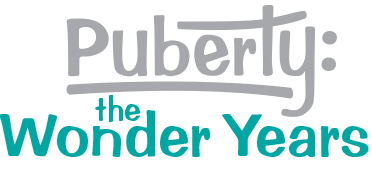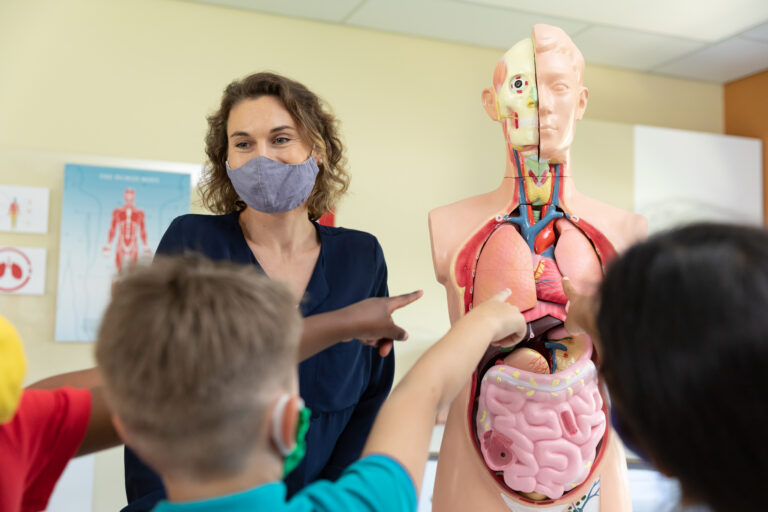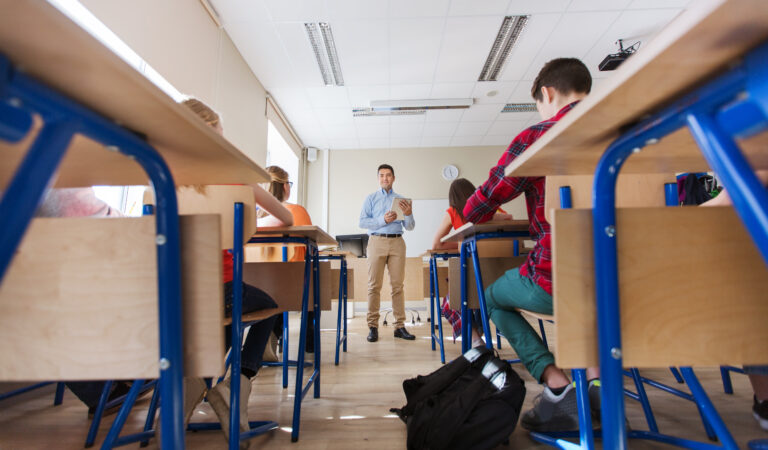Introduction
Puberty is a developmental stage that young people experience in which the body changes from a “child body” to an “adult body.” Changes involve growth of bones and muscles, changes in body shape and size, and the development of the body’s ability to reproduce. The growth and changes that happen during puberty take place more rapidly than at any other time in life, except for during infancy. For most people assigned female at birth, puberty begins between age 8 and 13. For most people assigned male at birth, puberty begins between age 9 and 14. Once it begins, puberty lasts two to five years. Disability and physical changes of puberty can call for some unique adaptations.
While people with disabilities generally experience puberty on a similar timeline as people without disabilities, some people with disabilities experience puberty earlier or later than people without disabilities. According to the Mayo Clinic, puberty is considered “precocious” or “too soon” when physical changes begin before age 8 in people assigned female at birth and before age 9 in people assigned male at birth. Some people may experience delayed puberty, which Stanford Children’s Health explains to mean physical signs of sexual maturity do not appear by age 12 in people assigned female at birth or age 14 in people assigned male at birth. Delayed puberty can also take longer than 5 years to complete.
Differences in timeline may be related to a variety of factors, including genetics, predispositions associated with another condition, or side effects of some treatments. Everyone is unique, so awareness of variations can help educators support students with disabilities alongside their peers.
Supporting Students with Disabilities in Class
Education is important to help young people know what to expect during puberty, but people with disabilities may need more support to navigate the changes in their body. Some people may be concrete thinkers who focus on what is physically around them and struggle to process abstract concepts. As an example, educators may need to explain wet dreams and/or menstruation with extra context to minimize confusion and unnecessary fear. Use direct language and define terms to minimize the opportunity for misinterpretation. While some educators avoid gendered terms to be more inclusive, people with some types of disabilities may better process information with terms like “boy/girl” and “male/female.”
Picture books and diagrams can help students to see how certain changes happen to support understanding. If two-dimensional images are too abstract, three-dimensional props, such as dolls and anatomical models, can help students to get a better sense of concepts related to their bodies. Other hands-on props, such as sample menstrual products or models of birth control methods, can also help students understand their options and identify the supports that could work for their needs.
Many of the physical changes of puberty also bring changes in personal care and hygiene needs. As the body changes through puberty, physical support needs may change due to changes in a person’s physical dimensions and/or increased hygiene needs. Some people may also experience exacerbations in the symptoms of disability over the course of puberty. Many people with disability and physical changes are uniquely dependent on parents and caregivers who may not be supportive of a young person’s sexual development.
Ensuring Safety
Given rates of violence and abuse against people with disabilities, educators should use trauma-informed practices to support students when talking about personal care or hygiene management needs. Education around self-care and hygiene may need to be more direct to help students develop appropriate support plans. Several adaptive clothing companies have begun making undergarments that support greater independence for people with disabilities. Adaptive products can be expensive but may offer inspiration for DIY modifications that could work well.
Forced sterilization is thought of as an issue from the past; yet struggles to protect bodily autonomy and reproductive rights of people with disabilities are ongoing. Youth with disabilities may not feel safe bringing up certain topics, questions, or concerns. Identifying and explaining the role of people who can support physical assistance needs, such as a school nurse, can be helpful.
While disability and physical changes of puberty may introduce unique challenges, educators can create safe spaces to practice difficult conversations and find supportive resources. Everyone deserves autonomy to the extent possible, and puberty is a critical time to foster that personal development.
This post is part 4 of a series on Disability and Sexuality written by guest blogger, Ashira Greenberg. Read part 1, Introduction to Disability and Sexuality and part 5 Disabilities and the Social-Emotional Changes of Puberty.
Notes and Resources:
Introduction
- All About Puberty, Nemours KidsHealth
- Precocious Puberty, Mayo Clinic
- Delayed Puberty, Stanford Children’s Health
Supporting Students with Disabilities in Class
- How to help teens with special needs navigate puberty, UW Health
- Hygiene – Supporting Youth with Disabilities, TASCC
- Sex education for kids with an intellectual or developmental disability, Sex Ed Rescue
- The Sexual Assault Epidemic No One Talks About, NPR
- Guide to Trauma-Informed Sex Education, Cardea Services
- Forced Sterilization of Disabled People in the United States, National Women’s Law Center
- 11 Best Adaptive Clothing Brands, Good Housekeeping
Note on Person-First Language: This post uses Person-First Language as Person-First Language is generally considered to be the most respectful form for professional writing and/or talking about a group of people whose individual preferences are unknown. Individual preferences for Person-First Language or Identity-First Language are equally valid and should always be respected when referring to an individual.



